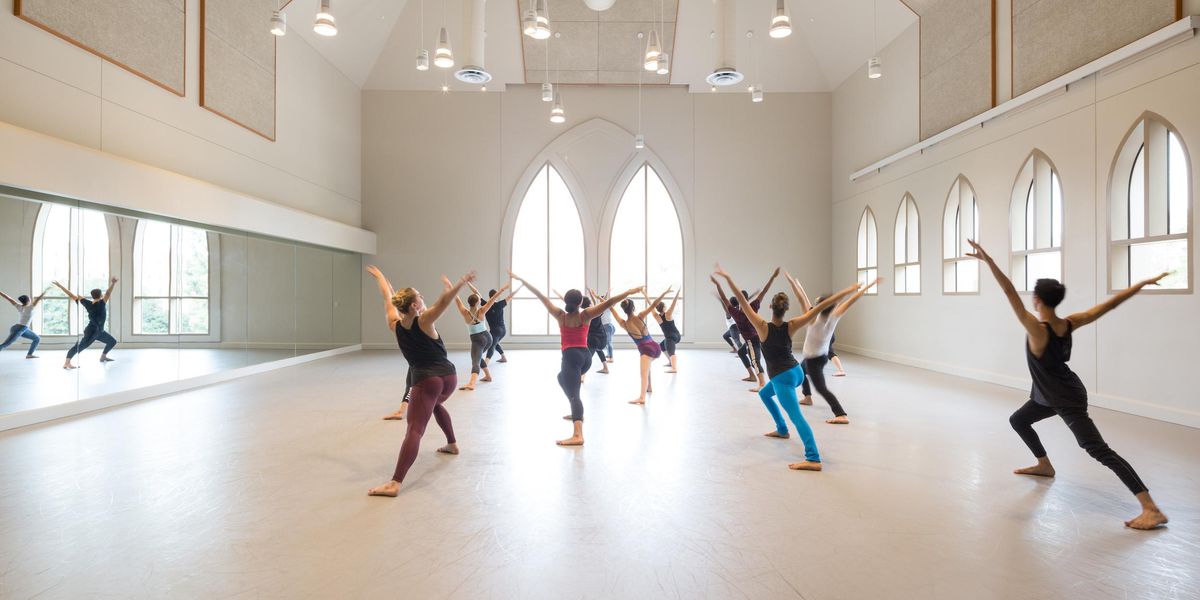Studio Notes
Back to Bennington
When you watch modern dance from the 1930s and ’40s, some of it can read as time-bound cliché: the drama of a Graham contraction, the wistful yearning favored by José Limón. But it’s worth remembering: There was a time when, to quote from The Life of Martha Hill, a film-in-progress about that fertile era in dance history, “everything was new.”
That documentary was screened in April during the 92nd Street Y’s informal Fridays at Noon series, just one part of a program titled “Celebration of the Bennington School of the Dance (1934–42).” The event looked back at the summer school and festival (founded by dance educator Martha Hill) that brought together now-legendary artists—Graham, Limón, Doris Humphrey, Charles Weidman, Anna Sokolow, and others—to work and play on the campus of Bennington College in Vermont. They joined each other in taking concert dance where it hadn’t gone before: giving in to the pull of gravity, rather than defying physics on pointe; commenting on current society and politics, rather than retelling tales of princesses, peasants, and swans.
The afternoon began with a short reading by Elizabeth McPherson, a Montclair State University professor, from her forthcoming book on the school. She shared charming anecdotes from former School of the Dance students, many of whom were physical education teachers with little formal dance training. In the film screening that followed, those students came into view via decades-old, evocatively grainy footage: a chorus of barefoot, leotard-clad bodies on a sunlit lawn, powering through a grounded, muscular phrase. Technicians they were not. But their unpolished physicality brimmed with a sense of newness, with the excitement of feeling a feeling for the first time.
A younger generation of students—the Montclair State University Repertory Dance Company—was on site to perform works by choreographers who had passed through the Bennington summer program. With sincerity and poise, they brought a similar air of innocence to pieces dating from 1938 to 1956. Weidman’s “Opening Dance” from Opus 51, with its simple geometric patterns, and Hortense Lieberthal Zera’s humorous Never Sign a Letter Mrs. shared a certain lightheartedness, while Sokolow’s Lament for the Death of a Bullfighter, Ethel Winter’s En Dolor, and Limón’s There Is a Time (excerpted) went to darker places. These works may not seem groundbreaking to current eyes. But still, what a treat to see them revived in such an intimate setting, and by students who are themselves in the midst of discovering who they are.
Julianne Cullen of the MSU Repertory Dance Company in
There Is a Time. Photo by Julie Lemberger, Courtesy 92Y.
Branching Out
Summer is a good time to try something completely new—like, say, flying. OK, the teachers at Fly-by-Night Dance Theater can’t promise that you’ll sprout wings by the end of their Aerial Dance Bootcamp. But they can teach you basic trapeze skills, tension-releasing techniques, and strength-building moves that will benefit even your earthbound dancing. All classes (July 16, 18, and 20) are led by Julie Ludwick, director of the Brooklyn, NY–based company, and require no prior aerial dance experience. See www.flybynightdance.org. The Margaret Jenkins Dance Company in San Francisco announced that Tere O’Connor will be its 2013 CHIME Across Borders chair. Each year, this mentorship program, one of several that MJDC runs (see “No Right Answers”), invites one nationally recognized choreographer to mentor a group of local dancemakers. To be one of those mentees, you must live in the Bay Area and apply by Aug. 1. See www.mjdc.org/chime/borders.




